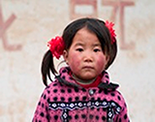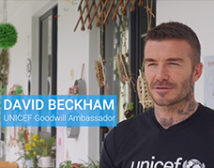By Huang Shuo, Xinhua reporter
|

Photo by Huang Shuo/Xinhua
Medical staff talk with a mother who has received early essential newborn care (EENC) in the People's Hospital of Hongsipu District in Wuzhong City, northwest China's Ningxia Hui Autonomous Region. |
As the newborn cried and the tired mother caught her breath, the midwives quickly dried off the newborn with a towel and put him on his mother's chest where he would rest on his stomach for the next 90 minutes.
A few minutes passed, and the baby began to slowly move his lips, beginning to suckle his mother's breast for the first time.
The mother and child had experienced "early essential newborn care (EENC)," a package of interventions including immediate and thorough drying after the birth, followed by direct skin-to-skin contact until the first breastfeeding, and delayed umbilical-cord clamping for at least one minute.
EENC has been undertaken by over 500 mothers in Hongsipu District of Wuzhong City in northwest China's Ningxia Hui Autonomous Region since March, as part of the Safe Neonatal Project, a joint effort by China's National Health Commission and UNICEF.
|

©UNICEF/China/2018/Li Manwei
A mother takes care of her newborn baby in Hongsipu District, Wuzhong City in Ningxia Hui Autonomous Region. |
The five-year project started in 2016 and will benefit more mothers and babies with better services and policies in China's underdeveloped areas.
"We are cooperating with China to improve the coverage and quality of cost-efficient interventions for better newborn survival and development in the country," said Huang Xiaona, maternal and child health specialist to the UNICEF China Office.
EENC is easy and effective, and will be a key part in the joint project bringing a difference to newborns, mothers and hospitals in west China via simple changes. It was suggested by the World Health Organization in 2013 as a way to help save newborn lives.
COST-EFFICIENT CARE
In Hongsipu, Liu Huilin had her second baby in April, and found it started to suckle her breast while lying on her chest under EENC.
"I was separated from my first baby for three days after she was born," said the 27-year-old mother. Her first child became infected after the umbilical-cord stump was wrapped for six days, while the second, with the stump left uncovered as guided by EENC, had the cord separated in a week.
"Despite a decline in figures, the number of neonatal deaths in underdeveloped areas of the country is relatively high," said Xu Tao, vice director of the child health care department of the National Center for Women and Children's Health, Chinese Center for Disease Control and Prevention, the principal investigator of the project.
"About 70 percent of newborn deaths could be avoided by simple interventions, which are not well applied in poor areas in west China," Huang said.
"EENC helps deal with many threats to newborn lives including anemia and infection, and encourages beneficial long-term breastfeeding," said Xu.
The package method is used with normal newborns as well as babies born premature, one of the prime causes of newborn deaths.
|

Photo by Huang Shuo/Xinhua
A mother receives kangaroo mother care (KMC) with her premature baby in the General Hospital of Ningxia Medical University. |
"Kangaroo mother care (KMC)" is a special part of EENC that ensures premature and low birth-weight babies receive skin-to-skin contact and close monitoring.
In Ningxia's regional capital of Yinchuan, KMC has improved the survival of premature babies in the General Hospital of Ningxia Medical University, which also participates in the project.
"Especially, we see physical conditions of early premature babies improving under KMC," said Qiu Yinping, director of the neonatal department. "It's also good for the mothers to relieve any anxiety and worry about their child."
The Safe Neonatal Project has introduced EENC to 20 districts in northwest China's Qinghai Province and Ningxia, as well as southwest China's Sichuan and Guizhou provinces, expecting similar results to the pilot districts.
CHANGE OF MIND
"We didn't actually accept EENC at first," said Wang Haiyan, an obstetrician in Hongsipu who was among the first batch of personnel coached in the method in Ningxia.
Wang had never tried the new care service in her career. A report by UNICEF earlier showed that pilot districts barely used effective interventions such as well-timed cord cutting and skin-to-skin touch.
She changed her mind after two days of coaching, watching how EENC was practiced in the hospital. "I was touched seeing the baby lying on its mother in harmony, and realized it was feasible," Wang said.
Now in Hongsipu, where the majority of residents immigrated from extremely impoverished areas, all obstetricians, midwives and obstetric nurses are qualified to apply EENC. It is also becoming more accepted by expectant mothers.
|

Photo by Huang Shuo/Xinhua
Duan Huirong, the first woman to receive EENC in Hongsipu District, still has a fresh memory of her experience after childbirth. |
Duan Huirong, the first to receive EENC in Hongsipu, was impressed with the "exciting" skin-to-skin touch. "I was exhausted after the delivery, but when I touched my baby, the energy suddenly appeared," she said.
"Usually people who do not understand EENC, soon accept it after they learn the details, and many then recommend it to friends or relatives," Wang said.
Xu's team has helped coach 13 provincial-level medical institutions and 44 local ones in the four pilot provincial regions, in cooperation with a group of 20 experienced national instructors who are all senior medical experts.
Qiu, one of the national instructors in the project, sees more parents embracing the service. "Many parents came here after they heard that we deliver and care for babies in a different way," she said.
Liu Jing went to the hospital nearly every day to stay with her premature baby under KMC, after the baby finished a few days of intensive care, when they were separated.
"I missed and worried about my baby so much, so I'm really happy and can feel the confidence while holding my boy under KMC," she said.
WIN-WIN COOPERATION
Maternal and neonatal safety is a major concern of the United Nations and is also significant for China, which had an infant mortality of 6.8 per 1,000 last year and plans to reduce the figure to five per 1,000 by 2030.
"More challenges, such as older mothers, have emerged under the second-child policy, and people are also seeking better and safer medical services," Xu said.
In May, the National Health Commission released two action plans on maternal and newborn safety as well as child health, which included EENC and other interventions in the Safe Neonatal Project.
"We share the project outcomes with the government so that they may influence decision making at the national level and benefit a wider range of people," Huang said.
Cooperation experiences in pilot districts in west China, which has similar conditions with many developing countries, are also of great value to other parts of the world.
China is one of the few countries that has newborn mortality declining at a similar rate as under-five mortality, indicating effective control of newborn deaths, according to Huang.
"China can inspire other developing countries with its progress and also learn from them under South-South cooperation and the Belt and Road Initiative," she said.
































